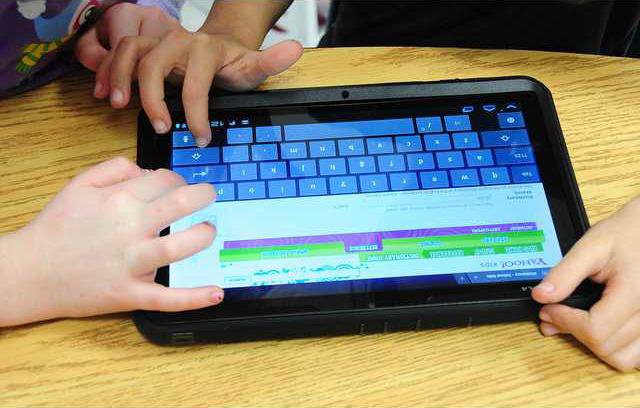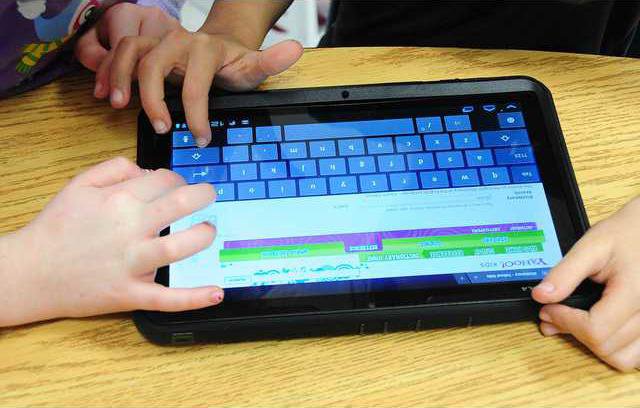Personal electronics have been used for instruction in Hall County classrooms for several years now, but one thing has stood in the way: the State Code of Georgia.
"The local boards have chosen to allow personal devices for many years," said Aaron Turpin, technology director for Hall County Schools. "No one was aware this rather old line of state code existed."
The board chose to take action on the matter at their last meeting, creating a resolution to waive the policy. School board members hope state legislators will take it one step further in their 2012 session and amend the code.
"That flies right in the face of everything we've been talking about as a district and a state in terms of bringing your own technology and using wireless as an instructional tool," Hall Schools Superintendent Will Schofield said. "We have such a huge percentage of kids now, particularly older kids, who have a phone and a large portion have smartphones. They can do research and write from a handheld phone."
Turpin said personal electronics, especially things students can bring on their own such as cell phones and iPods, are with the student at all times, and it's much easier to have a one-to-one ratio of them.
That's something the county can probably never provide with computers.
"Our local board allows students to bring in personal computing devices as long as the principal OKs it. It's much more than just cell phones — it's tablets, laptops, everything," Turpin said.
The idea was piloted three years ago at Flowery Branch High School, when one semester students could bring their own cell phones and technology devices.
Turpin said the response was phenomenal.
This is the second year the pilot has gone districtwide, even in the elementary schools.
"They're used as an instructional tool to consume content and learn items," Turpin said. "There's some really neat stories where a class was talking about the old South and the economic systems, and the students sent text messages to their grandparents and got firsthand accounts of what it's like to pick cotton."
Kim Payne, a second-grade teacher at Wauka Mountain Multiple Intelligences Academy, uses personal electronics to scan QR codes, which are square barcodes of black patterns on a white background.
"We've found it's easier at this age for students to access websites with a QR code. They don't have to worry about the long URL," Payne said. "We realize that's an important skill but it's very time-consuming and this gets them to the website quickly."
Though most second-grade students don't bring their own cell phones to class, Payne sometimes lets groups use hers to do assignments.
Turpin said students, parents and faculty must sign some form of a use agreement in order to use electronic media in the classroom.
The agreement says inappropriate use will "result in a cancellation of these privileges as well as a possible assignment of disciplinary action consistent wit the policies and procedures of (Hall County Schools)."
Technology, owned by the student or by the school, can't be used to harm others, gain unauthorized access to files and programs, introduce software viruses, download music or "access, upload, download or distribute pornographic, hate-oriented, profane, obscene, sexually explicit material," among other guidelines.
And using tablets and smartphones to scan QR codes is another way teachers can ensure Internet safety, Payne said.
"It's a security measure because, if I wanted them to research something on the giant sequoia tree, I can find a website, they can scan it and it's the only place they'll go," she said. "We also have several academic sites in math and reading and it's a way they can get straight to those sites."
It's also used for safe video searches. Instead of students searching in an online database and possibly pulling up an inappropriate video, they scan the code and see exactly the video they are supposed to see.
Payne also uses QR codes for online dictionaries and class blogs.
"We are also able to put (the codes) in our newsletter so if they're in the car and want to practice their math flashcards, they can grab their mom's cell phone and do it right there," Payne said.
She hasn't had any concerns at all, and does have a few students who bring their own devices.
"It's important for parents to understand this is possible because all of our schools are wireless, but our students connect to a filtered network the same as they would if they were on a plugged-in computer," Turpin said. "At most of our schools, cell phones don't work because of the construction of our schools. They're connecting via WiFi, which is in compliance with the Children's Internet Protection Act."

